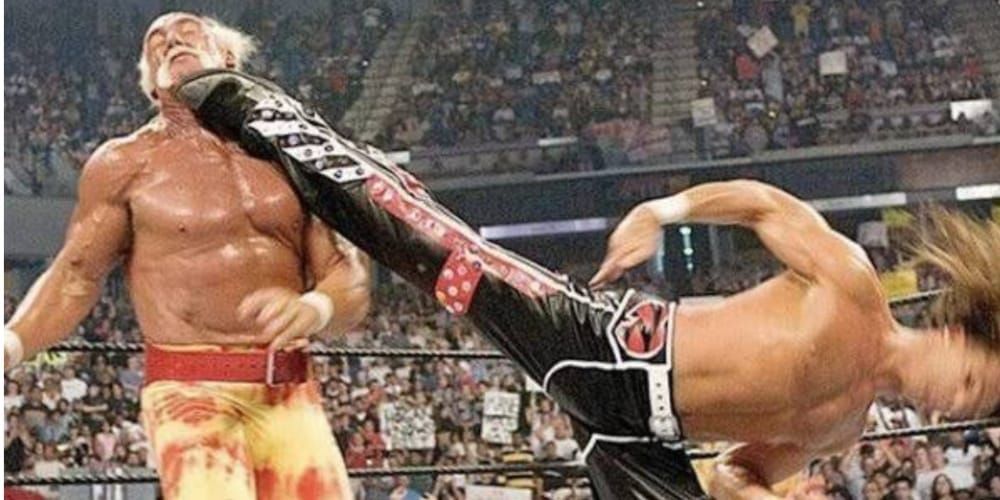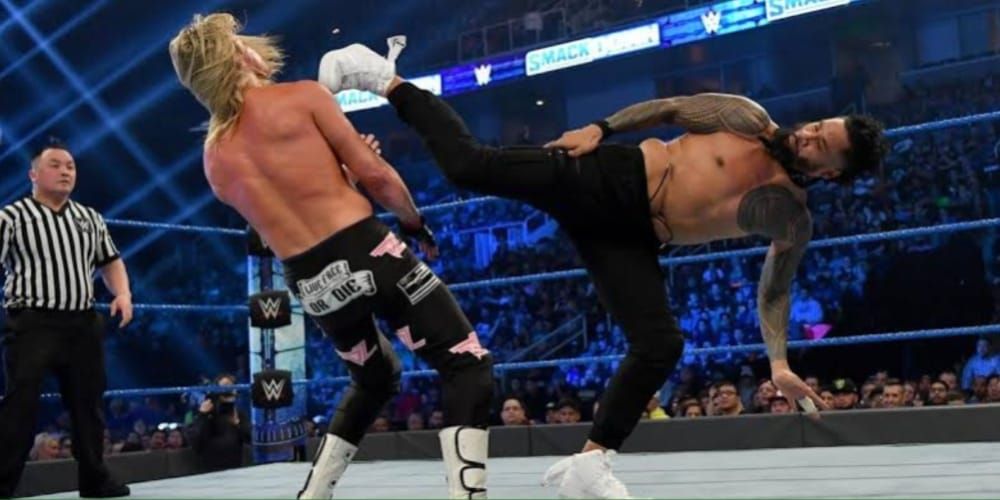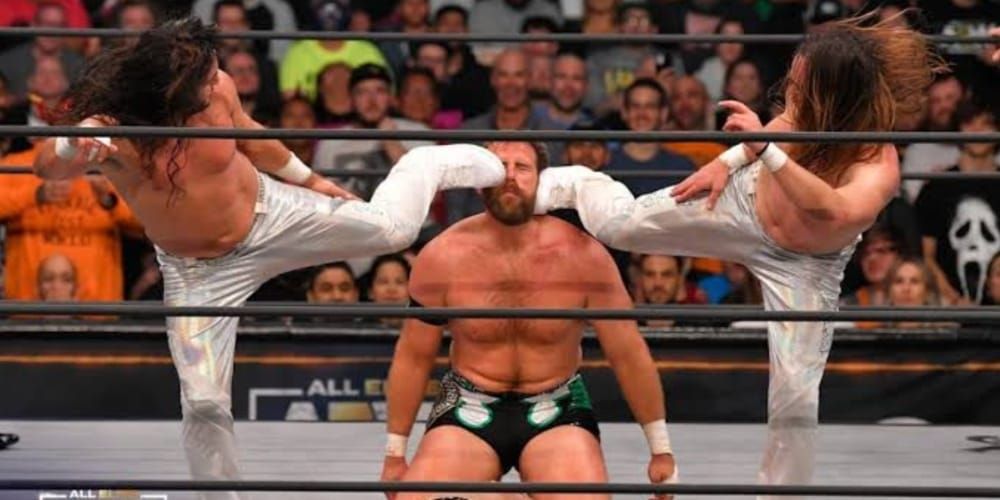Highlights
- The superkick, popularized by Shawn Michaels as the "Sweet Chin Music," was once a devastating finishing move that captivated audiences with its anticipation and storytelling potential.
- The trend of wrestlers using the superkick and other signature moves has broken wrestling's unwritten rules of maintaining uniqueness, leading to a diminished aura and overexposure of the move.
- The overuse of the superkick has resulted in fans feeling a sense of predictability and monotony in matches, sparking a desire for more unique and awe-inspiring finishing moves to maintain the emotional investment in the outcome.
In the world of professional wrestling, certain moves have gained legendary status, captivating audiences and leaving a lasting impact on the sport's history. Among these iconic maneuvers is the superkick, a devastating kick to the opponent's chin that was first introduced by "Gentleman" Chris Adams in the 1980s. However, it was the flamboyant "Heartbreak Kid" Shawn Michaels who truly popularized the move, branding it as the "Sweet Chin Music" and making it synonymous with victory. Over the years, the superkick has undergone a remarkable transformation, evolving from a match-ending finisher to a heavily utilized move by numerous wrestlers. This evolution has sparked controversy among fans and industry insiders alike, questioning the move's aura and uniqueness.
The Rise Of The Superkick As A Dominant Finisher
The genesis of the superkick as a powerful finishing maneuver can be traced back to the innovative mind of "Gentleman" Chris Adams during the 1980s. His finisher was the superkick - a high-impact kick aimed at the opponent's jaw, executed with precision and flair. Adams' introduction of the superkick garnered attention and appreciation within wrestling circles. However, it was the incomparable "Heartbreak Kid" Shawn Michaels who brought the move to the pinnacle of popularity and firmly established it as a finishing move. When Michaels adopted the superkick, rebranding it as the "Sweet Chin Music," he elevated the move to iconic status during his illustrious career in the WWE.
Each time Shawn Michaels wound up for "Sweet Chin Music," the anticipation in the arena reached a fever pitch. The audience knew that the match was about to reach its climax, and excitement rippled through the crowd. With a theatrical flourish, Michaels delivered the devastating kick, connecting his foot with the opponent's jaw, often leading to an immediate pinfall victory. This ability to turn the tide of a match with one well-timed kick captured the imagination of wrestling fans, who were spellbound by the charisma and skill of "The Showstopper." The success of "Sweet Chin Music" lies not only in its impact as a physically punishing move but also in its storytelling potential.
The Breakdown Of Wrestling's Unspoken Rules
In the bygone era of professional wrestling, there was an unspoken understanding among wrestlers that certain moves were off-limits to others. This understanding was rooted in the need to maintain the uniqueness and identity of each competitor's character and moveset. These unwritten rules, often referred to as "kayfabe," were a crucial part of wrestling's mystique and allure. Wrestlers guarded their signature moves fiercely, and using someone else's finishing maneuver was considered disrespectful and even taboo. However, as the wrestling landscape evolved and the industry began to embrace a more transparent approach, the age-old concept of kayfabe started to crumble.
As the modern wrestling landscape became more receptive to change and innovation, the once-sacred rule of protecting signature moves started to fade away. Wrestlers began paying homage to their predecessors and peers by incorporating classic maneuvers into their matches. The superkick, being a high-impact and visually impressive move, naturally found itself in this wave of emulation. The turning point for the superkick's status came with the retirement of Shawn Michaels, the man who had made the move iconic. With Michaels stepping away from active competition, the move lost its exclusivity, and other wrestlers saw an opportunity to add a powerful weapon to their arsenal. The move's frequent usage in high-profile matches, often producing thrilling moments, further solidified its status as a desirable move for performers seeking crowd reactions. However, as the superkick became more prevalent, its aura as a match-ending move diminished. What was once a spectacular and awe-inspiring sight gradually lost its impact due to overexposure.
The Superkick Became An Overused Wrestling Move
As the superkick's popularity grew, so did its frequent appearance in wrestling matches across various promotions. While initially a thrilling spectacle, its overuse began to take its toll on the move's impact and appeal. One of the most significant criticisms arose from The Young Bucks, who faced backlash from fans and peers for relying excessively on the superkick during their matches. It became a running gag among fans that a Young Bucks match would feature an almost comedic number of superkicks, undermining the move's credibility as a devastating finisher. This over-reliance on the superkick extended beyond The Young Bucks. Established stars like Dolph Ziggler and The Usos, as well as numerous new wrestlers, began incorporating the move into their in-ring repertoire. While it may still elicit a reaction from the crowd, the move's diminished status as a finishing maneuver reduced the suspense and drama it once brought to a match's conclusion.
The abundance of superkicks led to a sense of predictability, making matches feel formulaic and monotonous. Fans yearned for the days when a wrestler's finishing move was unique and differentiated them from their peers. With the move's widespread usage, matches started to lose their individuality, and the emotional investment in the outcome lessened. To rectify this situation, some wrestling purists and fans clamored for a return to the past, where moves were protected and exclusive. They yearned for the days when a wrestler's finisher was genuinely awe-inspiring and signaled the culmination of an intense, hard-fought contest. This sentiment fueled the debate over the necessity of preserving the mystique of certain moves, like the superkick, to maintain wrestling's allure and captivate audiences.





0 Comments